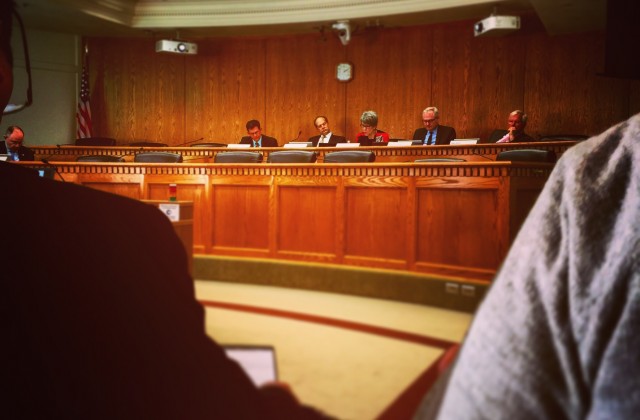Preservation Tax Exemption: An Efficient and Sensible Way to Preserve Older Housing
Yesterday, in Olympia, I gave some comments to the Senate Human Services, Mental Health & Housing about Senate Bill 5182. The proposal was offered in a previous legislative session but failed to pass. I think this proposal called the “Preservation Tax Exemption,” is a great idea if it’s done correctly. The idea is to expand the concept behind the Multifamily Tax Exemption (MFTE) Program to existing buildings that offer lower rents. Owners of those buildings could seek tax exemption for keeping a portion of units in their building restricted to levels at 50 to 60 percent of Area Median Income (AMI). This could allow some breathing room for owners of older buildings who could use the tax relief to better maintain their buildings and avoid having to sell them to new owners who would have to dramatically raise rents to recover their investment.
Here’s the City of Seattle’s description of the program:
Preservation Tax Exemption
Establish local option for a 15-year tax exemption for property owners in the private market who agree to set aside 25 percent of their buildings for low-income tenants (earning less than 50-60 % of area median income) to maintain affordability for lower income community members, improve housing health and quality for very low-income residents and prevent displacement of long time community members.
Often comments in front of Committees get squeezed into a minute or even less, but here’s the statement I handed to the Committee.
——————————-
I am Roger Valdez, Director of Smart Growth Seattle, an advocacy organization for more housing choice and opportunity through housing development of all types in every neighborhood and for every level of income in Seattle.
We are very much in favor of the principles embodied in Senate Bill 5182. There are many buildings in Seattle that because of their age, condition and location, offer lower rents to people who need housing. As these buildings age, owners often pass the savings of deferred maintenance on to their tenants in the form of ongoing low rent or smaller increases over time.
However, this tenant friendly move, ironically, can plant the seeds for disruption for tenants. There comes a point when an owner is confronted with significant costs to catch up with deferred maintenance and frequently these owners feel compelled to sell their property because of the costs of maintenance, taxes, utilities and other costs. This results in the all too familiar stories on the front page of the Seattle Times that we could all write in our sleep with a headline like: Vulnerable Individual Faces Displacement After Building Sale.
The City of Seattle has had tremendous success in creating real rent savings for real human beings who are renters through the Multifamily Tax Exemption (MFTE) Program. The MFTE program has used a deferral of some tax revenue (costing the median single-family home about $10 a year) to create thousands of affordable units. This is a very low-risk high-yield investment by the City in affordability. The positive impact on households is significant and real, creating savings for those individuals and families that allow saved money to be used for tuition, day care, or paying down debt. Expanding this program to existing, older, more affordable buildings can avert the usual headline and prevent real pain.
I would caution the Committee and the Legislature to keep in mind that this program only works if it is a real incentive. Dialing up rates of inclusion and dialing down Area Median Income (AMI) will not create more affordable units at 30 or 40 percent AMI. On the contrary, such a move would create fewer affordable units at 50 or 60 percent. Please don’t dial inclusion up or AMI down. In fact, many building owners and developers say this level of inclusion is already too high.
Also I am wary of language in Section 9.1. (f) allowing the City, “additional requirements to reduce displacement of very low-income household tenants.” I don’t want the City of Seattle to have any more authority than they absolutely need, and no jurisdictions, including the City, have developed a quantifiable measure of “displacement.” I urge you to strike that section. In the following section I also don’t think language on “height, density, public benefit features” etc. in subsection 9. 2. (b) is necessary. I urge you to strike those specifics.
Finally, sections 10 and 11 seem overly prescriptive as do parts of sections 15 and following. Please consider rewriting and striking some of this language.


